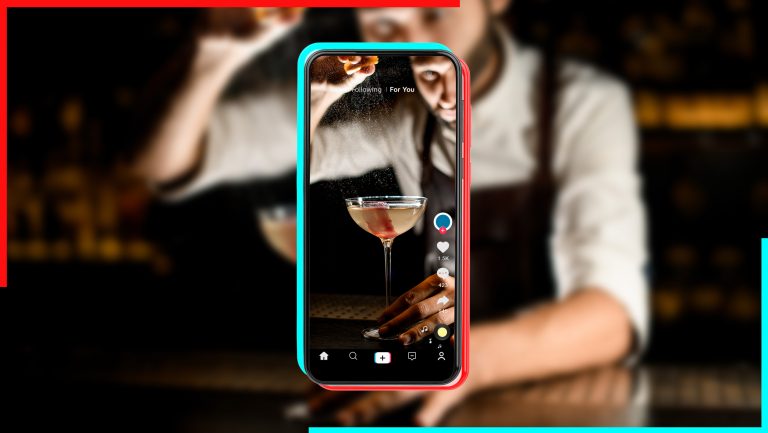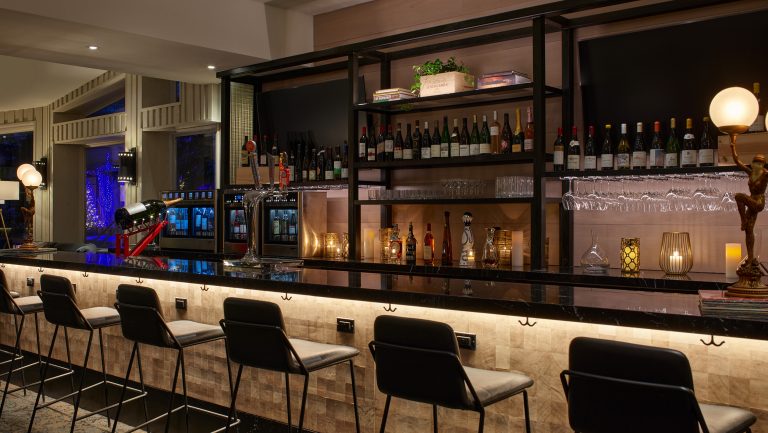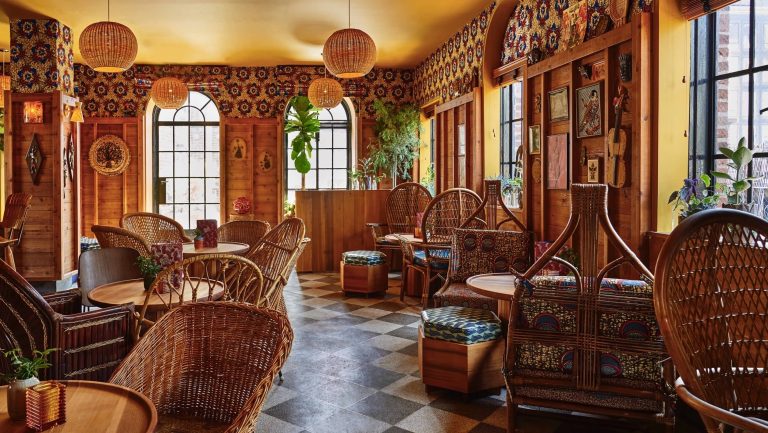It’s three in the afternoon, and 40 or so people are tucked in at tables at Distilled New York, a pub in Manhattan’s Tribeca neighborhood. There’s nary a bartender in sight. But that’s not a problem. The patrons haven’t come for drinks or food—the pub isn’t even serving. Rather, they’re using Distilled’s dining room as an office space. And while they work, the pub is generating revenue.
Coworking spaces at bars and restaurants are cropping up around the world from London and Tokyo all the way to the U.S. In New York City and San Francisco, coworking companies are partnering with on-premise venues to turn idle front-of-house spaces into communal offices for the remote working sector. This restaurant-by-night, office-by-day trend has created a new, passive stream of income for the hospitality industry, and it’s one that restaurants and bars are using to help pad their bottom line.
How Coworking Spaces Work
KettleSpace and Spacious in New York City are two of the upstart coworking platforms responsible for helping on-premise venues capitalize on this shared-economy model. KettleSpace, which launched in the summer of 2017, currently has partnerships with six bars and restaurants in Manhattan and is opening more in New York’s other boroughs soon. Spacious, which launched in early 2016, operates 16 coworking spaces in New York and 5 in San Francisco, and it’s planning to open in L.A. in the near future.

Don’t miss the latest drinks industry news and insights. Sign up for our award-winning newsletters and get insider intel, resources, and trends delivered to your inbox every week.
Both KettleSpace and Spacious are turnkey operations. Employees of the particular coworking company arrive at a partner’s restaurant or bar in the morning. They daisy-chain outlets so each coworker has a place to plug in; they brew coffee, set out snacks, and open the doors. Throughout the day they remain on site—acting as hosts, welcoming platform members, and making sure things run smoothly. If setup for evening service begins while members are still working, Spacious or KettleSpace will send a text to the members on site informing them that one of the dining areas is being set and asking them to move to another area or vacate the space, if necessary. At day’s end, members receive a text letting them know the space is closing and, often, inviting them to the venue’s bar for happy hour.
Shane Lyons, the executive chef and cofounder of Distilled, which is a KettleSpace partner, says that the challenge for any restaurant that isn’t set up for daytime service is what to do with that underutilized part of the day. “Distilled never wanted to operate a traditional lunch program,” he says, explaining that the numbers didn’t make sense for the pub’s business model. But the coworking model, Lyons says, “is pretty low impact on our space, and we don’t have to [supply] any additional staff to cover it.”
The coworking business models vary according to the different platforms, but restaurants are typically compensated based on an algorithm that takes into account the number of seats available and the average number of coworking member check-ins per month at their venue. Jaclyn Pascocello, the chief operating officer for Spacious, says monthly revenue could be nominal—say, $3,000 a month—or as high as $8,000 to $10,000 a month for larger, more highly trafficked sites. While none of the restaurant or bar partners were willing to go on record about their additional revenue, a partner at one Manhattan restaurant–coworking space says the fees it receives amount to roughly one-fifth of its monthly rent. Another partner says the income can be “a few thousand a month—enough to make it worthwhile.”
“It’s enough additional revenue,” says Lyons, “that it moves the needle in a way that no other kind of passive activity I’ve witnessed can. There are no magic buttons in restaurants; you have to hustle for everything. Everything [KettleSpace] brings me is almost passive income. That’s extraordinary. You don’t get that any [other way].”
What’s In It for the Operators
Katrina Parlato, the director of operations for Finn Town, a bar and restaurant in San Francisco that’s a Spacious partner, says it’s more of a revenue-generating effort than a profit play. “You’re making some revenue at a nonrevenue time,” she says. “There’s no such thing as ‘profitable,’ because we’re not open for lunch. But there’s some money coming in that wouldn’t be there otherwise.”
The programs tend to be low impact for the hospitality partners. “For us,” says Justin Sievers, a managing partner of Bar Primi, an Italian restaurant in Manhattan that’s a Spacious partner, “it’s kind of a pure profit. You’re not losing anything. You’re not losing seats and they’re staffing the space for you, so you don’t have labor costs involved.”
Some restaurants even manage to incorporate coworking during the hours that they’re open. For example, Bar Primi has a bi-level space; it does lunch service in its 35-seat main level and opens the 80-seat upstairs dining room to coworkers weekdays from 8:30 am to 5 pm. The venue has managed to take advantage of yet another revenue stream by offering some grab-and-go lunches for sale to coworkers.
Another potential benefit is passive marketing. The members who use the space to work may become new guests of the restaurant. Laura Fiorvanti, a master sommelier and the CEO of Manhattan’s CorkBuzz wine bar and restaurant, a Spacious partner, says she likes having the Union Square outpost of CorkBuzz in use as a coworking space during the day. “I think the Spacious customers are all respectful, hard working, talented, and creative professionals,” she says, “so it’s nice for them to see our space and what we do. We have seen some guests stay for dinner and drinks after they finish their workdays.”
That’s true at Finn Town too, where Spacious members often stay for drinks or dinner at week’s end, and at Distilled, where they linger for after-work drinks. In addition, Lyons points out that the KettleSpace members who work at Distilled aren’t the restaurant’s typical patrons—and few live near the Tribeca restaurant. “Even if they aren’t buying a plate of food,” he says, “just having them be a part of our regular community has been a huge resource for us.”
Over the last few years, the restaurant industry has been contending with reduced consumer spending—albeit with some growth in delivery services. As a result, restaurants and bars are seeking creative ways to increase revenue. In addition to coworking partnerships, some are turning to delivery programs, such as Caviar and Postmates; others are looking to the sharing economy, where platforms such as Bagbnb and LuggageHero provide baggage storage services at restaurants and shops to travelers. There’s even an app, Lulu, that lets bars and restaurants monetize the use of their toilets.
Whatever platform partnership a restaurant or bar decides to pursue, Lyons urges caution—and careful vetting. “You could spend a lot of time getting on different platforms and partnering with different groups that don’t bring anything to the table,” he says. “If they’re not putting butts in seats, and they’re not comarketing, then they’re just a distraction.”

Dispatch
Sign up for our award-winning newsletter
Don’t miss the latest drinks industry news and insights—delivered to your inbox every week.
When she’s not writing about beverage, travel, or weird science, Julie H. Case can be found deep in America’s forests, foraging for mushrooms.







